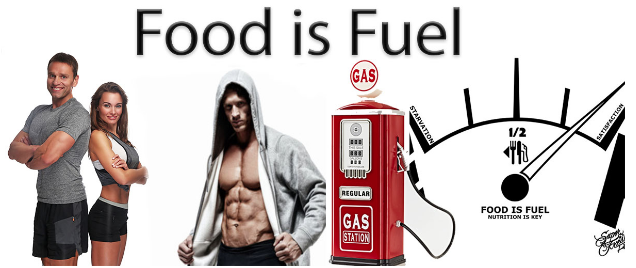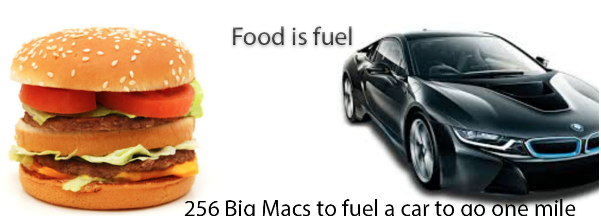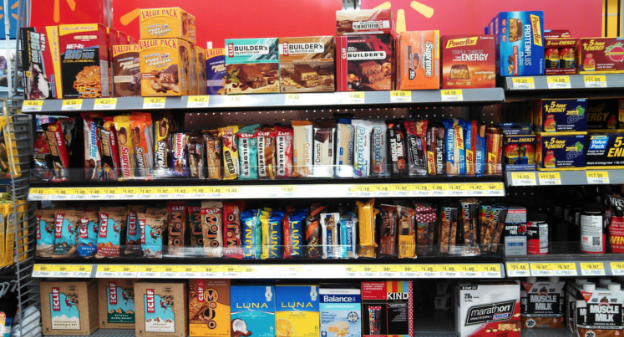Nutrition 201
First 5 Principles

Nutrition is 70% of Weight Loss
Once you have a purpose, have an understanding of your behavior, are motivated, a goal and a strong comprehensive plan, it’s time to think about the role nutrition plays in your success. The first thing to know is that it’s no small part; in fact, it’s 70 percent of the game. No matter what else you do, you will fail unless you eat the right foods in the right portions. It is much easier to have a good diet and a little exercise to lose weight. The other is an uphill battle eating a lot and doing a ton of cardio.Take the easy road.
Let’s face it⎯food is awesome! It tastes good, smells good, fuels our bodies, is something to enjoy with friends and family, and makes us happy when only moments before we were cranky. It’s one of the purest joys in our lives, and there’s absolutely no reason to deprive yourself of it. In fact, it’s okay to love it. That’s right, I said it. There’s nothing wrong with loving food…as long as we understand that it can’t love you back⎯it’s food. It’s there to give us power, not make us powerless. It’s there to help us, not make us feel helpless. It’s there to serve us, but we are responsible for choosing the servings.
I don’t like to say there are certain hard fast rules you have to follow when it comes to food, because everyone enjoys food, especially different foods, in their own way. Instead, I’m going to share some vital information about how certain macronutrients affect your body, as well as a group of principles you can use as a guide when you’re faced with making healthy (both physical and emotional) decisions.
Another reason is because of the effect the combination has on your blood sugar levels. Carbs raise blood sugar levels, and proteins stabilize blood sugar levels. They work together to balance blood sugar levels for up to four hours…if you eat the correct amount of calories.
But what happens if you eat a double quarter pounder, large fries and a coke? That’s 1710 calories. If your resting metabolic rate is 2000, and you eat five times a day. That’s 400 calories to stabilize your blood sugar for four hours — the remaining 1310 McDonald’s calories get stored as fat. You only use enough fuel to balance blood sugar levels for 3-4 hours rest gets stored.
The amount of different macronutrients you need and the portions of food you need to eat are all dependent on your body and your goals. At the facility we tweak these variables based on the individual. For example, Los Angeles Clipper, Blake Griffin, requires a higher protein component than our non-superstar athlete clients.
Nutrition Principles
When you eat, there are some very important things to keep in mind. I’m not going to call them rules, because I don’t want to completely take the joy of eating for you. It should be enjoyed, and you should never take that out of food. With that in mind, there are some principles below that you should follow, and the first one is the biggest one of all: FOOD IS FUEL.
Nutrition Principle #1 – Food Is Fuel

Food is to your body what gas is to your car. 256 Big Mac’s have the same amount of kcal or joules to fuel a car to go a mile The better the fuel, the better you perform…and without, you’re going nowhere. Food gives you power, not the other way around. When you start to feel powerless, take back the power and put it where it belongs…under your control.
Burgers with My Boy
One of the male bonding things I enjoy doing with my son is going to a local burger joint, sharing a meal, and talking. Even though my son is only seven, he already understands that he has the power to enjoy food, any food, within balance. I know this sounds crazy, but he will often order a milkshake and drink only a quarter or a third of it.
One day, as we were leaving the restaurant, a woman stared at the table we’d just abandoned, where my son had left half of his burger and most of his shake. She looked at me and said, “You’re going to let him waste it?” I smiled, nodded, he is taking his burger with him for another meal in 3-4 hours and left the restaurant.
Remember the philosophy to clean your plate
Just because we are often served ridiculous proportions of food, doesn’t mean we have to make the decision to eat it all. And why worry about “waste” if all that extra food just goes to your waist…and your backside. If you’re really worried about wasting food, there are better solutions than eating what you don’t want or need. You can save it for later or take someone along and split a meal.
I am not averse to throwing food away rather than eating when I don’t need any more. When I can, I have half of my meal boxed up before I start eating and give it to a homeless person⎯sadly there are many, and they congregate hopefully outside restaurants in California.
If you’re from my generation, you’ve dealt with people, most likely parents or grandparents, telling you that leaving food on your plate is wasteful⎯it’s not. If anything, it’s healthy and intelligent. My “wasted” meal isn’t going to feed some unfortunate child in some far off country. It’s much better to discard food than contribute to the obesity crisis in the United States! That’s where the real waste is…in quality of life for the unhealthy and uneducated, not to mention the millions upon millions of dollars spent annually on health care costs for treating cardiac disease, diabetes, and other serious health conditions.
Nutrition Principle #2 – Eat Within Balance
Different types of foods serve different purposes in your body⎯it’s important to make sure you’re getting all of them, and in the right portions.
In 2011, the United States Department of Agriculture released a new image to communicate how to eat within balance. Rather than the previously used food pyramid, which many people find confusing, the new MyPlate image shows a plate divided into portions that indicate how much to eat of each food group at each meal.
This is pretty much what my mother taught me growing up⎯fill about a quarter of your plate with protein, such as a chicken breast, fill another quarter with a starch, such as potatoes, bread, rice, or pasta, and the other half of the plate with vegetables, and salad. For those whose diets include dairy, meals can include a cup of milk, a carton of yogurt, or a slice of cheese.
There are no dos and don’ts when picking what to eat⎯eat what you like within balance and try to eat something from every food group. You can have anything in moderation. The key is learning to make good choices.
A meal program has to be practical. That’s why I don’t want you to get tied into meal plans and measuring right now. You can eyeball your food. Estimate how much you should be eating based simply on portion size: ¼ protein, ¼ starch, ¼ vegetables, ¼ fruit, with small servings of dairy a few times a day, if desired.
Nutrition Principle #3 – Carry Protein Bars

You never know when you’ll be in a situation when the food choices will be unacceptable or out of balance. That’s why you should always carry a couple of protein bars. I prefer Zone Perfect bars because I think they have the best combination of taste and nutrition. Try to pick a bar that’s around 200 calories and includes at least 15 grams of protein. This will last you or tide you over for 2 hours.
Other good options that taste good are:
Power Crunch 9 carbs and 13 proteins they are very waferific
Balance bars- Chocolate chip cookie dough
Luna -lemon zest
Remember when choosing a bar try to get 15 grams carbs and 15 grams Protein
Nutrition Principle #4 – Fast Food Is Fine in Moderation
It’s no surprise that 80% of people who are considered overweight and unhealthy are “heavy users” (pun intended) of fast food restaurants, but they eat their daily. You can enjoy fast food on occasion by learning how to eat there (e.g. eat half the bun, hold the mayo and/or cheese, take a few sips of a shake instead of devouring a 64 oz. Blizzard Blast). If you’re still hungry when you leave the golden arches, eat a protein bar or even better you get to eat again in another 3 hours.
Nutrition Principle #5 – Enjoy Your Food
Fad diets don’t work
Eating is one of life’s greatest pleasures, and there’s no need to squeeze all the joy out of food. By learning how to eat within balance, you can stay fit and healthy and still enjoy your food.
At a gym where I used to work out, there was a man in his seventies who looked years younger and was in fantastic shape. Everybody wanted to know the secret of his youthful looks. He was evasive about it, as if he held the keys to the secret of life. When people kept pestering him to share his secret, he finally revealed his fountain of youth: his cornbread diet!
We stood amazed as he revealed that he ate a balanced diet for breakfast and lunch and each night had one piece of cornbread for dinner at around six o’clock. After that, he didn’t eat again until the following morning.
This gentleman did not see the drawbacks of his approach. How many people would want to live that way? How many people could tolerate one lousy piece of cornbread for dinner and not eat anything else for the remainder of the evening? Did this man never go out for dinner with friends? Did he never have a craving for, say, banana bread, apple pie, or a fish taco?
This man’s diet exemplifies why I find so many fad diets and strange food regimens absurd⎯ who would want to eat that way?! Food should be enjoyed…especially when you can literally have anything you want within moderation.


